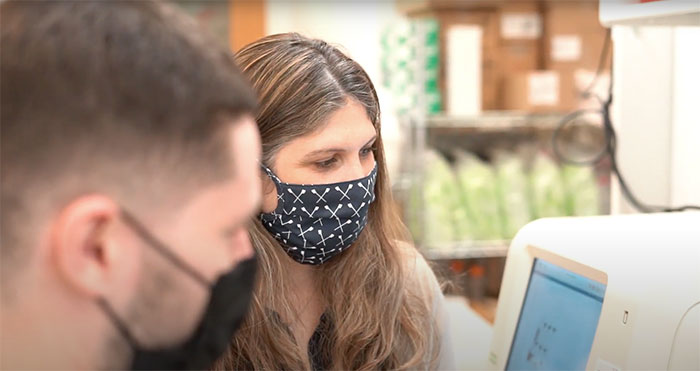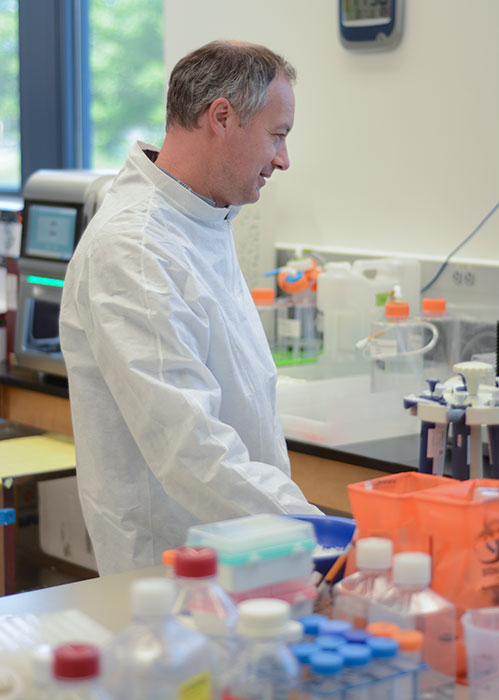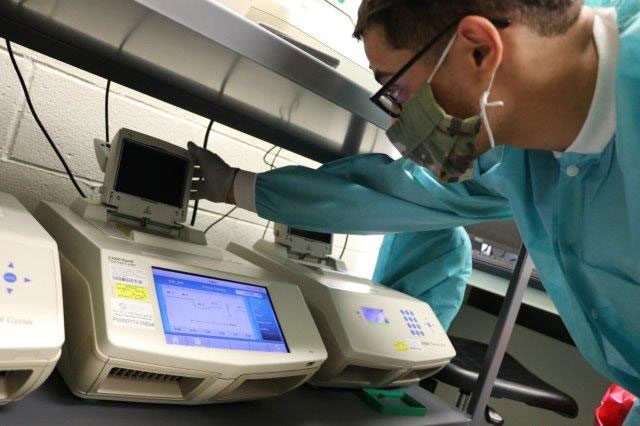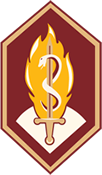'Invention of the Year' Awards Honor the Best, Brightest at USAMRDC

Following a banner year of scientific achievement across the U.S. Army Medical Research and Development Command, Brig. Gen. Tony McQueen, commanding general of USAMRDC and Fort Detrick, recently announced the winners of the command's 2021 Invention of the Year Award. The award serves to highlight the many scientific breakthroughs and successes during the previous year.
The competition's top prize was awarded to a team of scientists from USAMRDC's Walter Reed Army Institute of Research for their development of a novel vaccine called InvaplexAR-Detox, which is designed to prevent the diarrheal disease Shigella. The team, consisting of Dr. Edwin Oaks, Dr. Kristen Clarkson and K. Ross Turbyfill, found their vaccine to be safe and highly immunogenic, with Phase 1 clinical studies indicating that it may also be highly efficacious as well. The breakthrough is notable as diarrheal diseases – including Shigella – were recently ranked by the U.S. military as the leading infectious disease threat to deployed Service Members. As such, InvaplexAR-Detox fills a critical gap in the disease prevention toolkit, ensuring readiness and lethality in Multi-Domain Operations. The vaccine is now in the process of transitioning to a commercial partner for future development.

Scientists from WRAIR also took home the second place prize the competition. The team, led by Dr. Shelly Krebs, was lauded for their discovery and isolation of a specific set of monoclonal antibodies which have neutralized all known COVID-19 variants to date. Monoclonal antibodies are, in short, laboratory-produced molecules that act as substitute antibodies that can restore, enhance – or even mimic – the way a given person's immune system attacks cells.
"What my team did was to find very specific monoclonal antibodies that can essentially block the virus from interacting with cells – thereby blocking infection," said Krebs, a scientist and chief of B-Cell Biology at the Henry M. Jackson Foundation for the Advancement of Military Medicine, a contracting organization that works closely with WRAIR on a number of key initiatives. "I think we can continue to develop this type of monoclonal antibody for therapeutic and prophylactic purposes for multiple different infectious disease agents."
Krebs and her team – which includes Dr. Samantha Townsley, Vincent Dussupt and Gina Donofrio – had previously successfully isolated similar antibodies for diseases such as HIV and the Zika virus. When COVID-19 exploded across the U.S., the team was – in Krebs' own words – able to "transition quickly" and use the same research techniques for the novel coronavirus. Additional members of Krebs' team include Dr. Nelson Michael, director of WRAIR's Center for Infectious Diseases Research, and Dr. Kayvon Modjarrad, director of WRAIR's Emerging Infectious Diseases Branch.
"It's very exciting," said Krebs of the award, noting that research and development agreements for the monoclonal antibodies are currently being drafted with two industry partners. "For me, the most exciting part is that monoclonal antibodies are finally being recognized as a potential tool to help our military; hopefully we can really capitalize on the utility of these monoclonal antibodies moving forward to protect our troops."

The third place prize in the competition to a team led by Maj. Jeffrey Kugelman, director of the Center for Genome Sciences and division chief for Molecular Biology at USAMRDC's Medical Research Institute of Infectious Diseases. Kugelman's team is credited with developing the Biodefense Mass Sequencing and Surveillance (or, BMASS) tool, which effectively allows for mass testing of a given population for a vast array of diseases, including COVID-19. The tool relies on a reengineered Next-Generation Sequencing assay, which allows for the pooling of thousands of samples that are tied back to the originating sample via a molecular barcode.
"What this means is that you can process up to 10 thousand samples per day, per sequencer, to give a positive or negative for any pathogen," says Kugelman, noting that BMASS was originally used to test solely for COVID but has been expanded to test for Influenza A and Influenza B. "And further, because it's so inexpensive, we can actually apply this to asymptomatic carriers; we can screen the force, and then pull the folks who are infected but not showing any symptoms out of the formation so they can be quarantined."
Kugelman is hopeful the tool will aid in stopping "super-spreader" events, where a sick person who otherwise looks healthy unwittingly infects a number of other people. BMASS can also be implemented quickly with equipment already on-hand at DOD Public Health Laboratories; the small footprint further allowing the projection of a massive surveillance testing capacity forward to units in operational settings.
"It's very exciting," said Kugelman of the achievement. "I've been blessed with an amazing team that's helped put all this together – Soldiers, civilians and contractors that have worked together to push this through. It's been a very rewarding process, and I'm excited for the team to have won this award."
In addition to Kugelman, the team credited with developing BMASS included Dr. Peter Larson, Dr. Mariano Sanchez-Lockhart and Raina Kumar.
"I am extremely proud of the winners and their accomplishments over the past year," said McQueen. "Their contributions show, once again, the talent and capabilities of the personnel at MRDC, as well as their enduring commitment to the health and resiliency of all U.S. Service Members."














